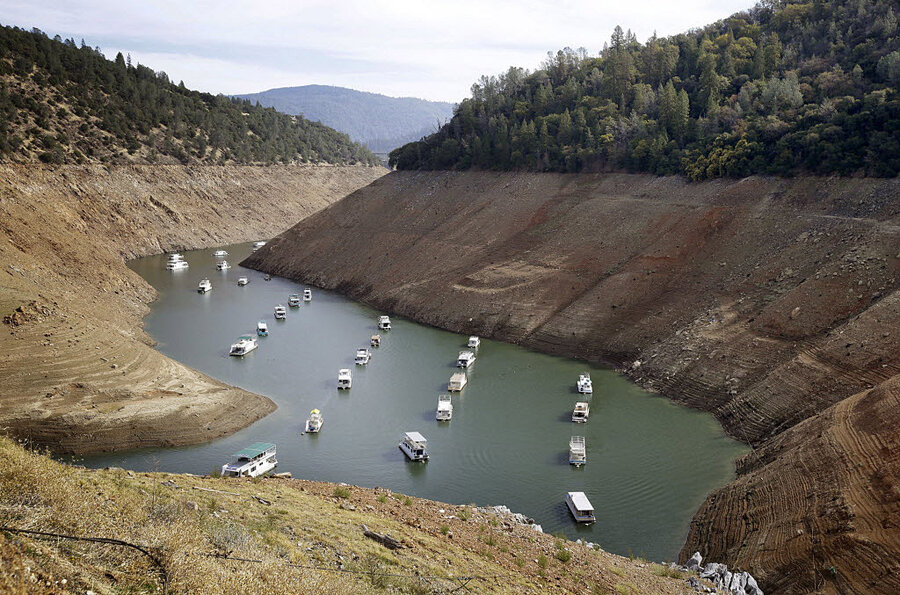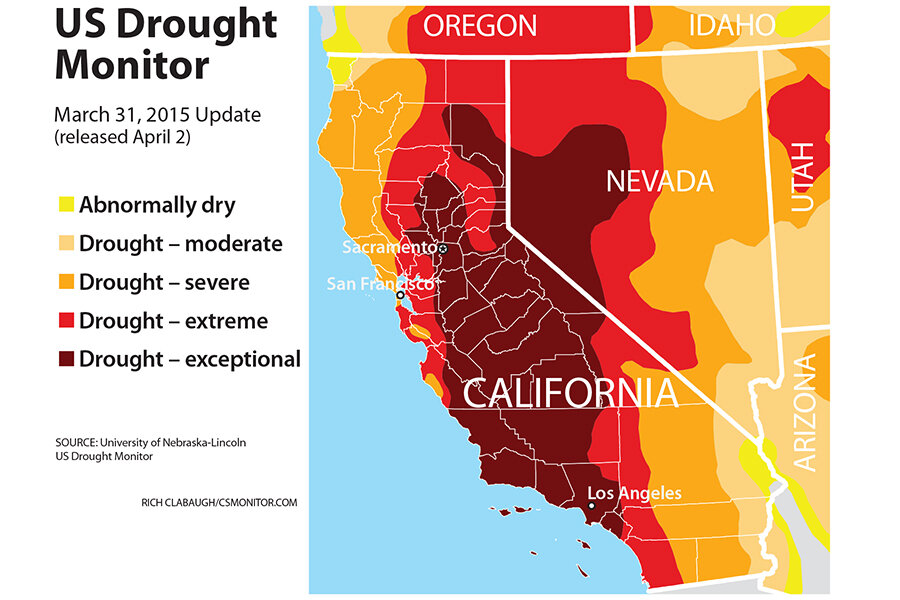California's mandatory water reductions: Why exempt the farmers?
Loading...
Standing on a parched piece of grass, California Gov. Jerry Brown (D) announced the state’s first-ever mandatory statewide water reductions on Wednesday. The state aims to cut back its water use by 25 percent over the next nine months, when the next wet season is expected to begin.
The new regulations, which the state’s water board plans to approve by early May, include ways to reduce water use in California’s urban areas. Cities will have to stop watering median strips that run down the middle of roads, some 50 million square feet of grass will be replaced with drought-tolerant landscaping, and golf courses, cemeteries, and campuses will all be forced to reduce their water use dramatically. But urban water use only accounts for around 20 percent of the water used by the state, leading some critics to question why the governor did not crack the whip on the water-guzzling agricultural industry, too.
“The governor must save our groundwater from depletion by directing the state water board to protect groundwater as a public resource,” Adam Scow, director of Food & Water Watch California, said in a statement.
And meteorologist Eric Holthaus wrote for Slate:
“Brown’s unprecedented actions are surely necessary, and welcome, but they don’t go far enough. For one, the only new “requirement” for the state’s agriculture industry is a reminder to submit reports on groundwater usage, which was already required. (Most irrigation districts have been ignoring the requirement in recent years.)”
Ground water usage is an important issue in California these days, as NASA climate researcher Jay Famiglietti recently pointed out in an op-ed for the Los Angeles Times. Mr. Famiglietti is using the NASA satellite system to track changes in water use around the world, and his studies have demonstrated that the Central Valley region of California, the world’s most productive agricultural region, is sinking by up to a foot a year as farmers use water from underground aquifers.
“One of the key points of the op-ed was that, since we will be relying more heavily on groundwater this year (perhaps an unprecedented 85% to 90% statewide), that we need to be extremely mindful to use it sparingly – all the more important as we consider the great potential for an even drier future in California with even more prolonged drought,” Famiglietti wrote in an e-mail to Mashable.
Because agriculture uses 80 percent of California’s water, many say the new rules should focus less on urban areas and more on farmers. But officials have said that farmers will not be held to the 25 percent reduction because they have already been affected by the state’s decision to release less water than usual from reservoirs during the last three years of drought. Other restrictions on pumping from rivers and creeks have also affected farmers, and others have noted that around 500,000 acres of cropland lay fallow last year amid rising prices for water and restrictions on the amount of water farmers were permitted to purchase from state and federal water projects in the San Joaquin-Sacramento River Delta. The price of water soared last year, with farmers paying nearly 10 times more than they did before the drought, Bloomberg reported.
Thousands of agricultural jobs have been lost as a result, and this year even more cropland may remain unplanted, the Los Angeles Times reported.
Instead of putting more pressures on farmers, the new restrictions focus heavily on lawns and golf courses, which account for about half of all of California’s urban water use. New developments will be obligated to install drip or microspray technologies if they irrigate with drinking water, and water agencies are expected to raise rates and fees. State agencies will also create a temporary rebate program to persuade homeowners to replaced their regular household appliances with more water-efficient gadgets. Meanwhile, if local agencies do not meet the 25 percent reduction requirement, they could face fines of up to $10,000 a day.
But even if all cities manage to meet their reduction goals, further efforts may be needed, experts say. Meanwhile, farmers are lobbying the government for laxer groundwater legislation, and laws that aim to put an end to the overuse of the state’s groundwater won’t be enforced until 2040, National Geographic reported.
Nevertheless, officials stress that it’s important for everyone to chip in and not point fingers.
“Some people want to say, ‘What about the farmers?' And farmers want to say, ‘What about those people watering their lawns?'” Governor Brown said, the Los Angeles Times reported.
“We all have something to do, and we can all do a little better.”









